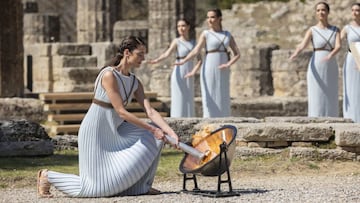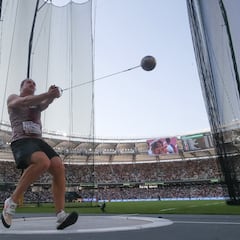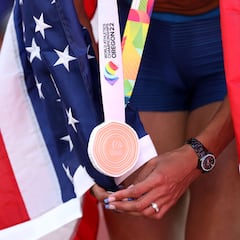Where did athletics track and field originate?
Track and field originated in ancient Greece, evolved in Britain, and traveled to the U.S. The history of the sport and its relation to Greek mythology.

Track and field was created centuries ago in Ancient Greece when men celebrated their Greek gods by showing off their athletic qualities. The first ancient Olympic games were held in 776 B.C. in the valley of Olympia on the southwestern coast of the Greek peninsula, and included only one event: the “stadion,” - from which we get the word “stadium”- a 200 meters race, the length of the ancient Olympic stadium.
Honoring the run of Pheidippides: Ancient history
The race shows respect for the Greek soldier Pheidippides, who is believed to have ran 25 miles from Marathon to Athens with news of the Greeks’ victory over the Persian invaders. Upon his arrival in Athens, Pheidippides called out, “Be joyful, we win!” right before he collapsed and died of exhaustion. In 1896, at the first modern Olympic Games, a marathon race of 40 kilometers (24.8 miles) was held on the route from Marathon- northeast of Athens- to the Olympic Stadium, to commemorate the run of Pheidippides.
The official marathon distance was standardized at 42.195 km (26 miles and 385 yards) for the 1908 London Games. The distance was the exact measurement between Windsor Castle, the start of the race, and the finish line inside White City Stadium. Some historians say the starting point was just selected to ease crowd control.
From 776 BC, the ancient games were held in Olympia every four years for almost twelve centuries. Additional athletic events were gradually added, including more categories such as the discus, javelin and the broad jump- all still present in today’s sport.
When track and field gained popularity: Modern Age
While track and field had a strong cultural significance seeded in Greek mythology, the sport did not start spreading till the 1860s, in England. In 1864, Cambridge and Oxford University accepted the first university track meet, and in 1866 England held its first championships for men amateurs. Winners were not compensated financially, setting precedent for today’s Olympic Games and basis for the sport.
Track and field then evolved in the United States, where the first collegiate races were held in 1873. The Amateur Athletic Union (AAU) was founded in 1887 as the governing body for the sport, and still is. Nearly ten years later, in 1896, the modern Olympics embodied track and field as one of the participating sports. Then in 1912, the International governing body known as IAAF was founded- World Athletics today.
Track Events
Track events involve indoor and outdoor sprints. Indoor sprints range from 50 yards to 500 meters, while outdoor sprints are either 100, 200, or 400 meters. Middle distance races range from 800 to 2,000 meters, and long distances range from 3,000 to 30,000 meters.

Related stories

Hammer, discus and shot: a weighty topic

Team USA top 2022 medal count
Hurdles and relay also fall under track. Men have to cross 10 hurdles at 110 or 400-meter races, and women must cross eight hurdles at 100 or 400 meters. Relay teams, which are composed of four athletes, are commonly 100 or 400 meters as well.
Field Events
Field events, on the other hand, include high jump, pole vault, long jump, triple jump, shot put, discus, javelin, and hammer.
